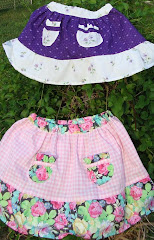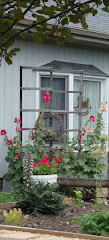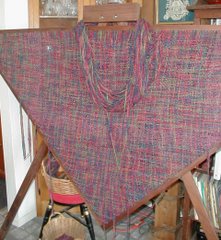This past weekend, a beautiful one by the way, we enjoyed an afternoon with homeschool friends at Polyface Farm. As always the day included a hayride and farm tour followed by a potluck picnic with delicious burgers made from salad bar beef and pigaerator pork. DH came home reinvigorated and ready to implement a few more ideas here at home and I came home with 20 pounds of creamy white pork fat for rendering.
This stuff is gorgeous. Yeah, it's fat and feels greasy but once I put it in the roaster oven, melt it for several hours over low heat and strain it into jars for storage, it's like buttah, I tell you. (Said with a plummy accent...) And, yes, I do this outside -- the roaster oven sets on a small table under the eaves on the back deck. At night I use a couple of bungee cords criss-crossed over the lid to be sure no small nocturnal animal gets into it as it slow cooks. If we had large nocturnal animals, I'd bring it into the garage or shed overnight but other than two coyotes last spring we don't seem to have that issue.
The rendering doesn't make a big mess and the smell isn't bad -- it's just a very rich roasting-meat smell. Makes me hungry, in fact, but also hangs around inside after the rendering's done. So outside is more practical though the wafting scent did raise the expectations of at least one visitor today who was disappointed to learn it was only lard rendering and not the beginning of a pig roast that he could smell.
Once the pork fat's melted, I strain the hot liquid lard through a couple layers of cheesecloth and pour it into canning jars. Put on lids and rings and the lard's ready to use. I store it along with our other canned goods as it will keep on the shelf for a good while. When I open a jar to use, I store the opened jar in the refrigerator. Cold lard makes the best pie crust...
Here's a link to stovetop directions for rendering lard. The basic idea is the same as how I do it except I use an electric roaster oven (set on 200-225ºF.) and don't add any water. If I was only rendering a pound or two, I'd probably go back to doing it on the stovetop or try out one of my crockpots so I could still set it outside.
Tuesday, October 11, 2011
Subscribe to:
Post Comments (Atom)

















3 comments:
Perfect timing! I'm getting some fat and wanted to ask someone how long to cook it. I want it for making soap, so does it need to be cooked a certain length of time to regulate the water content?
Since I'm using the electric roaster oven, I don't have to add any water to start the rendering and don't have to worry about getting the water out. (In a pan over a flame I probably would add at least a little water in order to avoid scorching the fat before enough's melted to offer protection from that.)
When are you making soap, Faith? I need to make a batch, too, but unless I find tallow to render I'll use olive oil.
Contact Mt. Joy Meat in Raphine. It's a new slaughter house owned by Jonathan Senger. I think the # is 377-MEAT. He's saved some tallow/suet for me and I think it's more than I'll need so he may let you have/buy it.
Thanks for clearing it up about the lard! The only time I rendered it before I wasn't sure if I cooked it long enough.
The soap I made Monday turned out well. I was impatient to start so I bought some lard. It's been 5 years since I made any and I wanted to try before I went to the effort of rendering.
If you're not busy next Thursday afternoon, some of the home schoolers we play with want to learn soap making and we could use another experience teacher!
Post a Comment